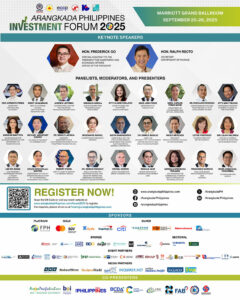The Philippines is at a pivotal moment in its digital journey. Demand for speed, reliability, and reach is more urgent than ever. It’s clear that traditional infrastructure models can no longer carry the weight of what the country aspires to become: a regional hub for connectivity, cloud, and content. The problem isn’t ambition; it’s coordination. The very networks meant to connect people and ideas are often built in silos, but solo runs won’t win the future. It will be shaped by ecosystems that share, scale, and build together.
This vision of shared infrastructure sat at the heart of a breakout session during the 2025 Globe Business G Summit. The session, “Unlocking Powerful Connections to Fuel the Future of Philippine Infrastructure,” convened industry leaders to challenge the status quo. The objective was to co-envision a country where fiber grids, data centers, and cable systems no longer compete for territory. They issued a call for the industry to work in sync to serve the nation at scale.
Globe Business’ Wholesale Division, through Vice-President Cocoy Claravall, outlined this strategy in motion. From new Festoon loops in Luzon to expanded subsea capacity via the Philippine Domestic Submarine Cable Network (PDSCN) and Asia Link Cable, Globe presented a roadmap that places reach and transparency at the core. Central to this strategy is the Managed Optical Fiber Network (MOFN), a model that allows hyperscalers and carriers to tailor their connections without losing the benefits of a managed service. ProAssure, a proactive platform designed to preempt issues before they affect customers, was also discussed as part of this shift toward more intelligent and accountable infrastructure.
“Our role has expanded. We’re no longer just connecting endpoints anymore,” said Claravall. “We’re enabling ecosystems from subsea to cloud, from enterprise to end user. And that means building infrastructure that’s flexible and future-ready.”
Ciena’s Head of Sales Engineering in ASEAN, Kian Soon Wong, brought a technical lens to the discussion, demonstrating how MOFN and Managed Spectrum enable customers to move beyond fixed contracts and build networks to scale as needed around real needs. The model empowers clients to choose their own equipment, monitor network health in real time, and scale on demand, all while the operator handles the heavy lifting of deployment and maintenance.
“MOFN is about balance,” Wong explained. “It gives customers control without the operational burden, and gives operators like Globe a way to deliver more agile services. It’s a collaboration model — not just a tech solution.”
From the data center side, STT GDC Philippines CEO Carlo Malana spoke of how the country is gaining traction as a hyperscale destination. He pointed to STT GDC’s Cavite and Fairview campuses as proof points for hyperscalers looking to deploy AI and cloud workloads in-country.
“The runway is long and the momentum is building,” Malana said. “Philippine infrastructure is no longer aspirational, it’s operational. The question now is how we scale that responsibly and fast enough to meet demand.”
For Globe, the role of a telco is no longer just to connect, it’s to co-create. KD Dizon, Head of Globe Business, emphasized that this is not just a commercial opportunity but a national one.
“Infrastructure is more than physical assets, it’s about trust, alignment, and the will to build beyond our individual interests,” Dizon said. “If we want real digital progress in the Philippines, we need to co-create the grid that will carry it.”
The session closed with a Disruptor Dialogue featuring Claravall, Wong, Malana, and Globe’s Janice Ortega. The conversation dug deeper into what it would take for the Philippines to compete in a world shaped by AI and real-time applications: seamless interconnection, policy alignment, and joint investments across multiple players.
The message was clear: this is no longer a one-player game. Infrastructure must now be approached as a shared national grid. And the Philippines, with the proper coordination, is ready to lead it.
Spotlight is BusinessWorld’s sponsored section that allows advertisers to amplify their brand and connect with BusinessWorld’s audience by publishing their stories on the BusinessWorld Web site. For more information, send an email to online@bworldonline.com.
Join us on Viber at https://bit.ly/3hv6bLA to get more updates and subscribe to BusinessWorld’s titles and get exclusive content through www.bworld-x.com.






